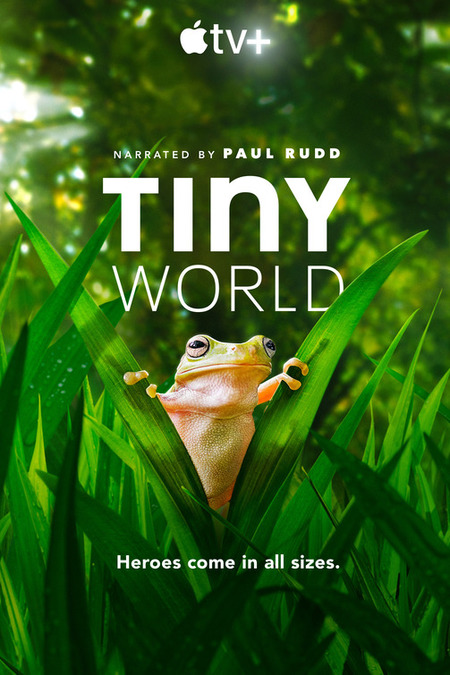In a year where the pandemic has somehow managed to get worse, and climate change is making its presence in scarily unprecedented and well ahead of the modelling ways, it can be all too easy to lose hope and think there is nothing good left in the world.
But, of course, the world does not automatically lose its wonder when things go bad, or we feel deeply and darkly pessimistic, and Tiny World, the first season of which debuted in October last year (with season 2 hitting the streaming platform on 16 April, 2021), beautifully assures us of this in six damn near perfectly wrought episodes.
Taking us from the African savannah to the outback of Australia and to English gardens, with stops at jungles, islands and woodlands along the way, Tiny World encourages us, with startlingly crisp footage and quietly enthusiastic narration by Paul Rudd, to look down from the elephants and kangaroos, the big noticeable animals of these environments and take a look at the smaller members of the ecosystem.
Such as the elephant shrew, a small mammal that in all seriousness is more elephant than shrew, that moves at breakneck speed along trails it has carved out on the savannah, grabbing food where it can right under the feet of far larger animals.
Like many of the animals and insects it shares its environment with, the elephant shrew is constantly having to allow for its far larger neighbours who clearly overshadow it in terms of notoriety and affection.
The joy of Tiny World, which can be a little twee at times with its cutesy, chatty narration though honestly the subject matter all but demands it, is that it explores animals and environments that would otherwise go unnoticed.
Created and written by Tom Hugh-Jones, the series goes to great lengths to showcase the diversity of life on earth by highlighting animals and insects such as spiders the size of a grain of rice or the acorn ant, which uses emptied out acorns – another insect’s larvae grow inside them and hollow them out, creating a perfect residence for ants – as a home because it is no bigger than a grain of sand.
From geckos no larger than credit cards to spiky lizards known as Thorny Devils in Australia who astonishingly draw water up through their bodies to their mouths while standing in a body of water, the creatures under focus in Tiny World are very, very small, and all too easily missed by us.
If you’ve spent a great deal of time watching nature documentaries on a multitudinous array of environments and flora and fauna, it can be easy to assume you’ve seen it all but Tiny World assures you that you haven’t and in bite-sized half hour episodes that give you enough to watch a number of select animals and insects do their thing but without overstaying their welcome, it’s the perfect way to get us to look down and consider the minnows that don’t necessarily grab our attention.
In that sense, the show is revelatory.
If, like this reviewer, for instance, you are arachnophobic and think the only dead spider is a dead one, you will be fascinated by the vast and amusing array of zebra spiders, many of whom have males attired in colourful matte-attracting attire and all of whom are so small they can be lost beneath leaf litter.
If not for Tiny World you would never know how wonderfully, colourfully and amusingly diverse they are, nor would you appreciate that for all their cuteness, that chipmunks have to fight hard to grab and keep territory and how desperately short their lifespan is, and how much depends on them getting enough acorns stockpiled for the winter.
Without this wondrous series, the cinematography of which is breathtakingly vibrant and endless imaginative in its representation, we would not understand what a struggle it is to survive a hurricane on a Caribbean island when you’re miniscule, or how losing your habitat and being forced into someone’s English garden can be both a blessing (assured food supply) and a curse (lawn mowing and stalking cats).
Tiny World is that rare and perfect thing in today’s been-there, done-that world, a series which breaks well-established boundaries and documentary norms and dares to make us look at a rich diversity of life, which makes up the majority of lifeforms here on earth, and without which we would be manifestly poorer.
While we most assuredly need to save the big and noticeable animals and insects and plants, we also need to work hard to save the small, tiny creatures too, who are often the lynchpins of many ecosystems and without which the big showy animals we usually notice would not be able to do what they do.
Tiny World, in all its wondrous glory and zoomed in goodness, is a richly-told, stunningly well-filmed reminder that we need to pay attention to the natural world as a whole, that everything is interdependent and that looking down is very much our time.
Tiny World season 1 and 2 are currently streaming on Apple TV+.
